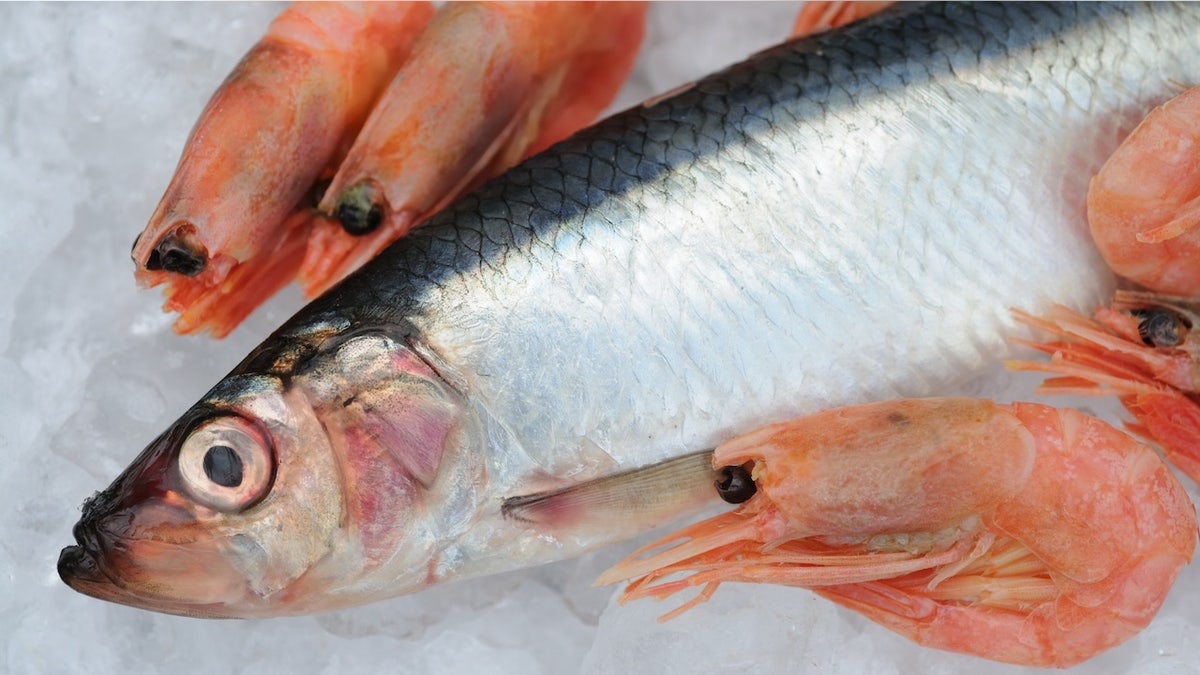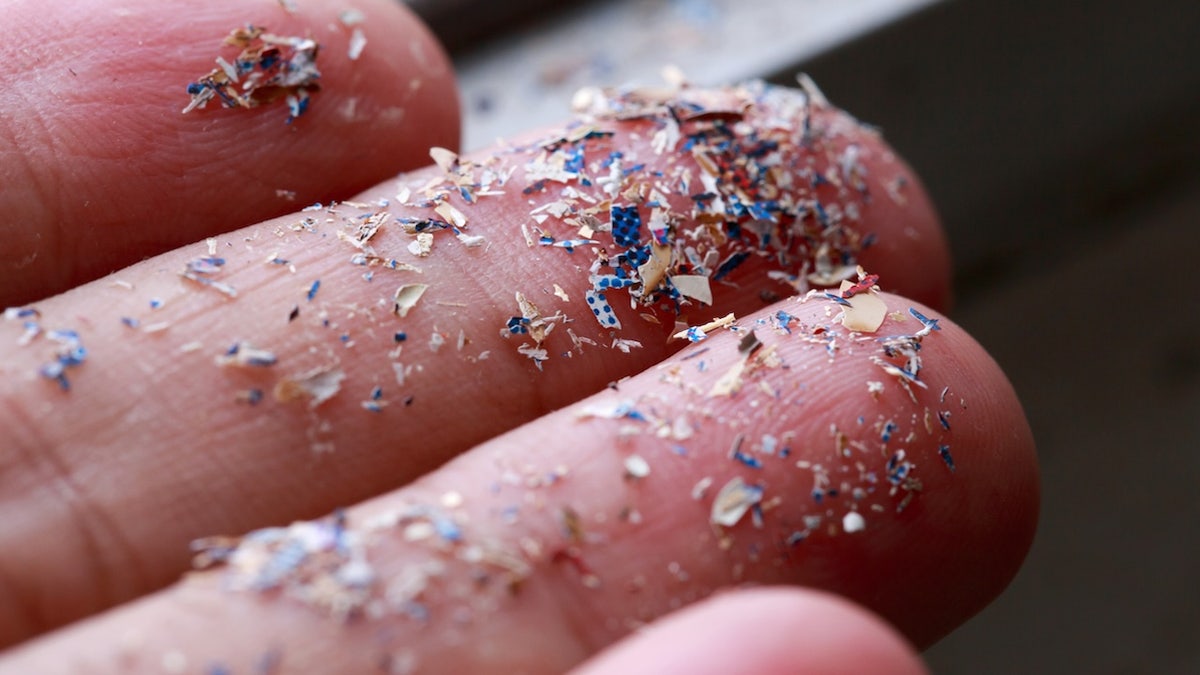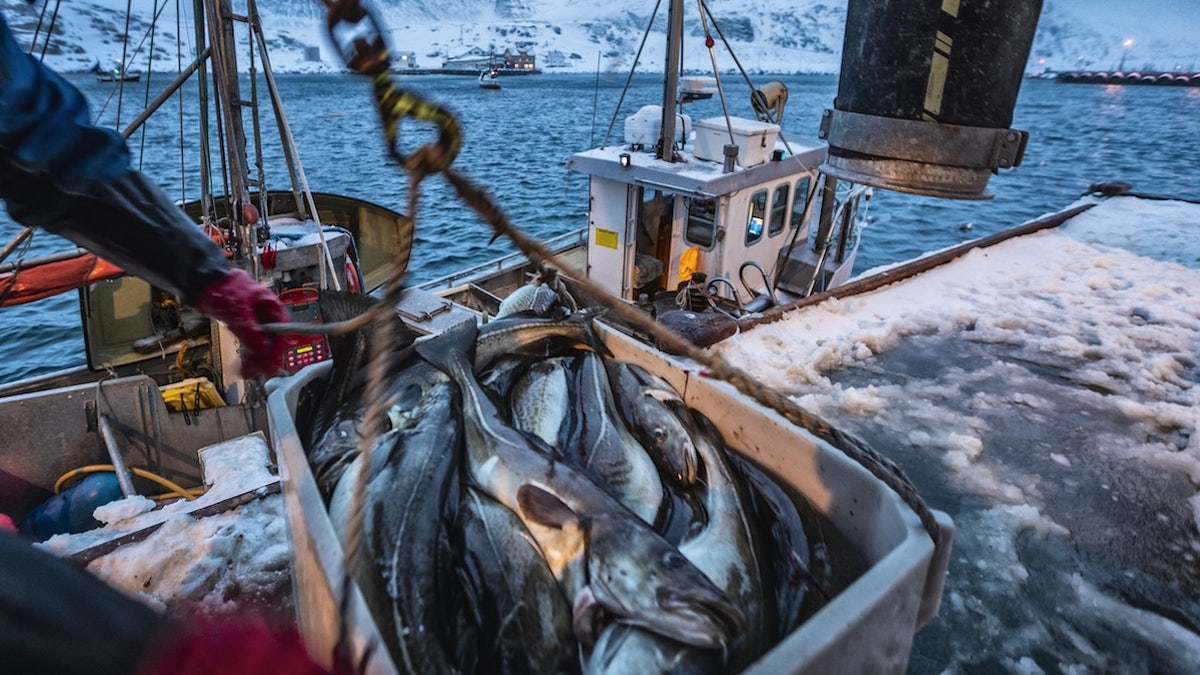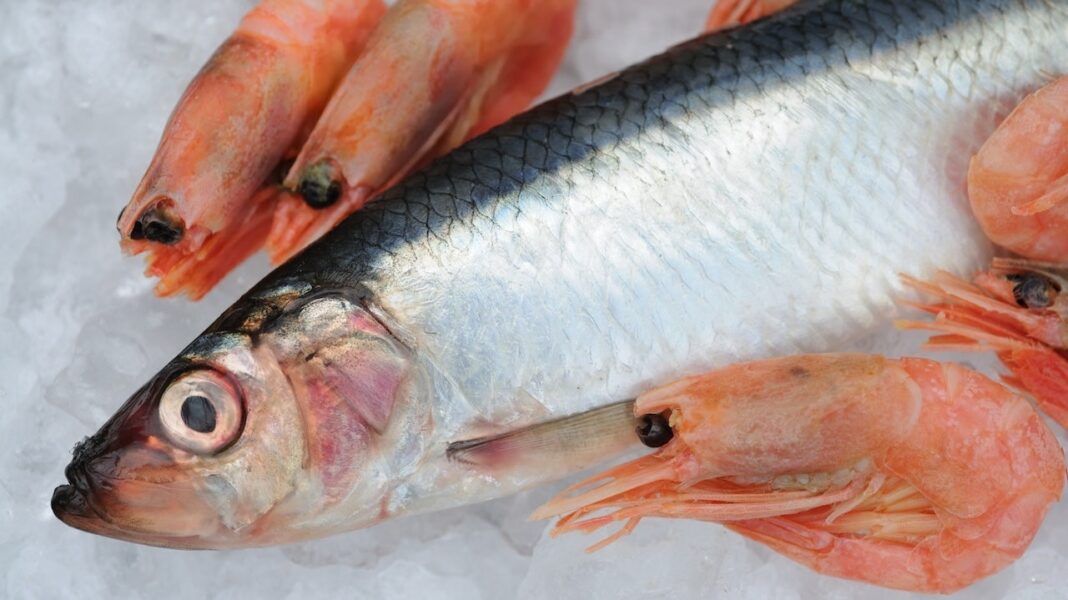Microplastics had been detected in nearly each seafood sample discovered off the coast of the western U.S. in a current research, researchers declare.
The research, led by Portland State College (PSU), recognized “anthropogenic particles” — that are supplies produced or modified by people — within the edible tissue of six totally different species of fish.
These included black rockfish, lingcod, Chinook salmon, Pacific herring, Pacific lamprey, and pink shrimp, in response to a PSU press launch.
MICROPLASTICS FOUND IN OVERWHELMING MAJORITY OF AMERICAN MEAT, WATER, PLANTS: STUDY
Particularly, the peer-reviewed research discovered microplastics — “tiny particles that shed from clothes, packaging and different plastic merchandise” — in 180 out of 182 samples of seafood that had been both bought at a retailer or obtained from a fishing boat in Oregon, the discharge acknowledged.

Microplastics had been detected in nearly each seafood pattern discovered off the coast of the western U.S. in a current research, researchers declare. (iStock)
The best focus of particles occurred in pink shrimp, and Chinook salmon contained the bottom.
“We discovered that the smaller organisms that we sampled appear to be ingesting extra anthropogenic, non-nutritious particles,” stated microplastics researcher and research co-author Elise Granek within the launch.
BOTTLED WATER FOUND TO CONTAIN TENS OF THOUSANDS OF ‘TINY PLASTIC PARTICLES’ IN NEW STUDY
“Shrimp and small fish, like herring, are consuming smaller food items like zooplankton. Different research have discovered excessive concentrations of plastics within the space by which zooplankton accumulate, and these anthropogenic particles might resemble zooplankton and thus be taken up for animals that feed on zooplankton.”
“What we put out into the setting finally ends up again on our plates.”
Susanne Brander, an ecotoxicologist and affiliate professor in Oregon State College’s Faculty of Agricultural Sciences, added, “It’s very regarding that microfibers seem to maneuver from the intestine into different tissues akin to muscle. This has extensive implications for different organisms, doubtlessly together with people.”
The findings had been printed within the journal Frontiers in Toxicology.
Is it fit for human consumption seafood?
The research authors don’t suggest that folks particularly keep away from seafood, as microplastics have been broadly present in different meals merchandise, Granek famous within the launch.
“If we’re disposing of and using merchandise that launch microplastics, these microplastics make their manner into the setting, and are taken up by issues we eat,” she stated.

Microplastics — “tiny particles that shed from clothes, packaging and different plastic merchandise” — had been present in 180 out of 182 samples of seafood. (iStock)
“What we put out into the setting finally ends up again on our plates.”
The excessive prevalence of microplastics within the seafood samples doesn’t mechanically imply that consuming seafood poses an instantaneous well being danger, in response to Bing Wang, PhD, affiliate professor of meals security danger evaluation on the College of Nebraska-Lincoln.
“’Secure’ is a relative time period in toxicology,” Wang advised Fox Information Digital. “Toxicity is dependent upon dose and publicity period — and at the moment, we lack a definitive understanding of linkage between the oral consumption of microplastics and nanoplastics and the antagonistic results in human well being.”
STUDY LINKS MENTAL HEALTH RISKS TO THIS TOXIN FOR THOSE BORN IN ’60S OR ’70S
Consultants agree that the dietary advantages of seafood, akin to high-quality protein and omega-3 fatty acids, play a vital function in a healthy diet, in response to Wang.
“There is no such thing as a present proof to counsel that seafood consumption poses an instantaneous hazard to human well being,” she added.
Sources of contamination
For this research specifically, Wang stated it’s essential to acknowledge that past microplastics, nanoplastics are additionally current within the setting and meals provide.
“Not like microplastics, which can cross by the digestive system with minimal absorption, nanoplastics are sufficiently small to cross organic boundaries, together with the intestinal lining, doubtlessly reaching the bloodstream and accumulating in organs,” she cautioned.
CLICK HERE TO GET THE FOX NEWS APP
In PSU’s findings, 80% of microplastics detected among the many samples had been derived from clothes or textile fibers, however there are different sources of contaminants.
For the reason that Sixties, plastic manufacturing has elevated by roughly 8.7% yearly, in response to Andrew Ortiz, a PhD scholar within the division of meals science and expertise at College of Nebraska-Lincoln.

The research authors don’t suggest that folks particularly keep away from seafood, as microplastics have been broadly present in different meals merchandise. (iStock)
“A lot of the contamination comes from on a regular basis human actions, akin to improper disposal of plastic merchandise, littering, and insufficient waste administration techniques, which result in plastics coming into waterways and ultimately reaching the oceans,” Ortiz advised Fox Information Digital.
Utterly avoiding microplastics is difficult, Wang emphasised.
CLICK HERE TO SIGN UP FOR OUR HEALTH NEWSLETTER
“They’re pervasive within the setting and current in numerous meals sources, not simply seafood,” she stated.
“Whereas this research is the primary of its variety within the Oregon area, its findings align with global research on microplastic contamination in seafood,” stated Wang. “Actually, the degrees reported on this research are throughout the world common.”
“There is no such thing as a present proof to counsel that seafood consumption poses an instantaneous hazard to human well being.”
“On condition that people already devour microplastics from a number of sources — together with water, air and packaged meals — the presence of microplastics in seafood must be thought of inside this broader context slightly than as an remoted danger,” she added.
For more Health articles, visit www.foxnews.com/health
The PSU research was funded by Oregon Sea Grant at Oregon State College.

